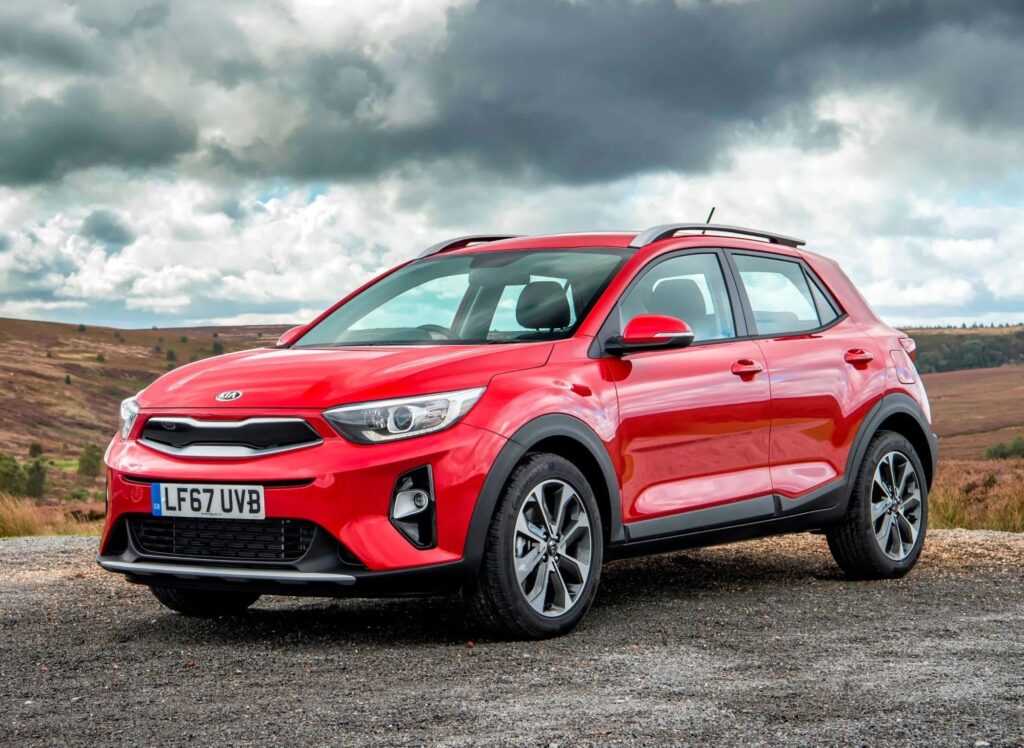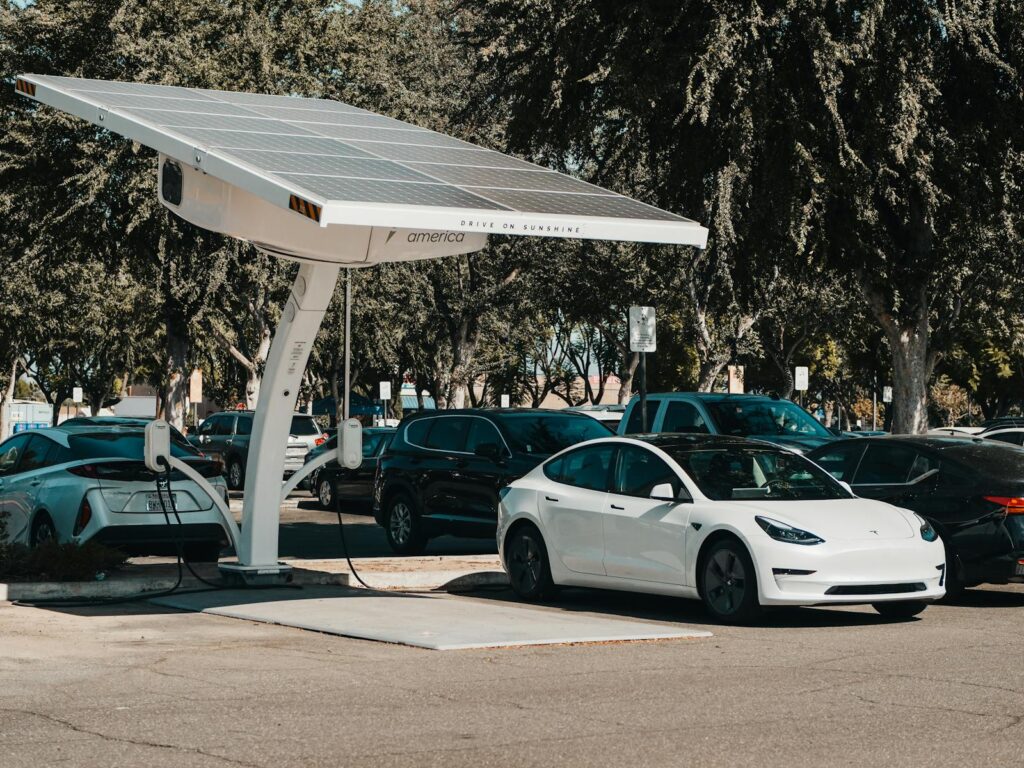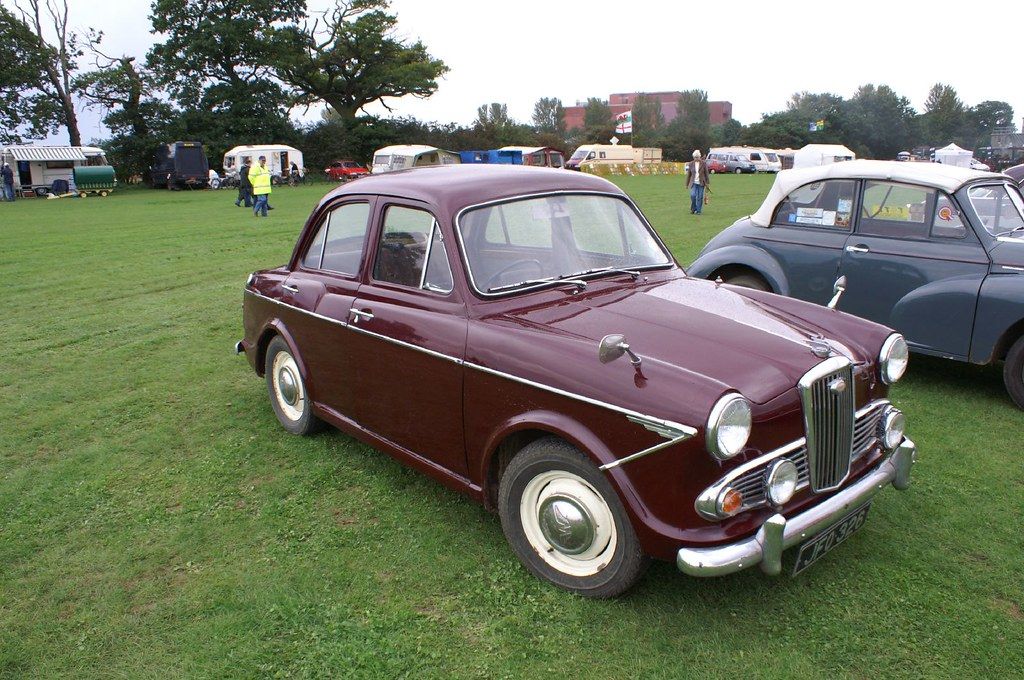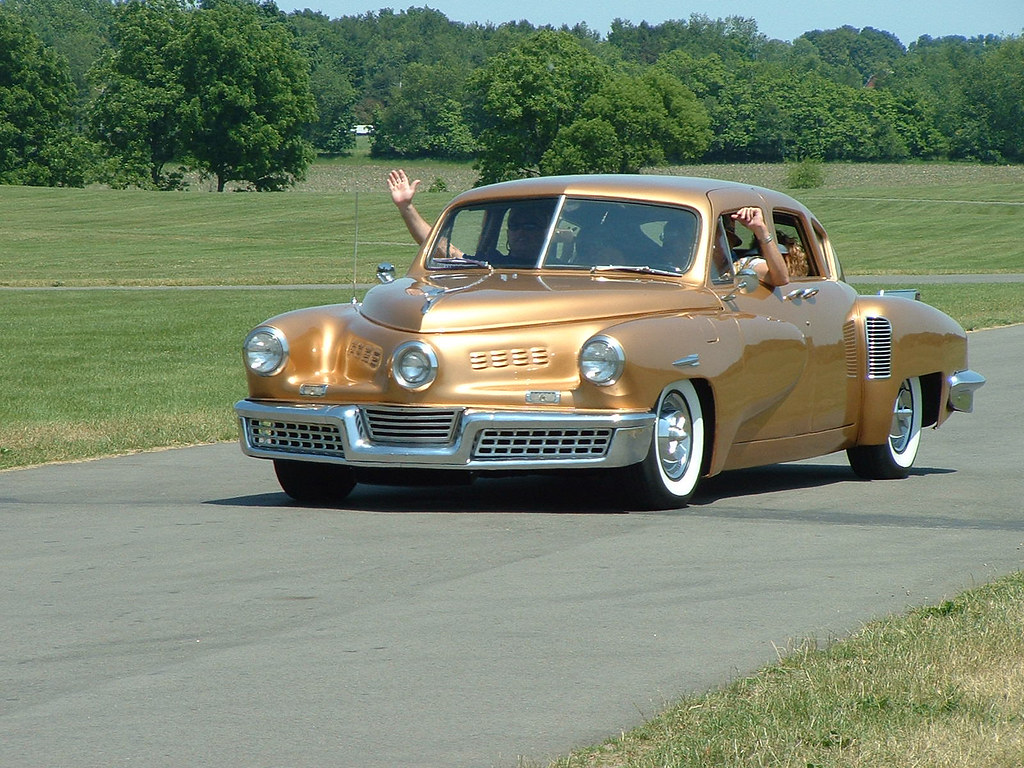
The automotive industry is a fascinating, cutthroat arena where innovation clashes with market realities, and enduring legacies are forged alongside spectacular failures. For every Ford or General Motors that becomes a household name, there are countless other ambitious ventures that, despite their initial promise or storied pasts, ultimately fade into the annals of history. These aren’t just stories of corporate missteps; they’re insightful case studies into the complex interplay of consumer preferences, economic pressures, strategic decisions, and the relentless march of technological change.
Many car brands have attempted to make an indelible impact on our roads, yet not all have succeeded in navigating the treacherous waters of intense competition and evolving consumer demands. This article delves into the unique narratives of some of these once-great automotive marques, exploring the multifaceted reasons behind their eventual demises. From financial mismanagement and fierce market competition to a sheer lack of innovation or a failure to adapt, each tale offers invaluable lessons on the complexities of thriving in one of the world’s most competitive industries.
Join us as we take a closer look at 14 prominent car brands that, for a multitude of reasons, ultimately went out of business. Their stories illuminate the challenges of maintaining relevance, establishing a clear identity, and securing financial viability in an ever-changing landscape. Prepare to discover the factors that led to their downfall and the enduring insights they offer to both automotive enthusiasts and business strategists alike.

1. **Pontiac**
Pontiac, a division of General Motors, carved out a formidable reputation for itself in the automotive landscape, particularly in the 1960s. It was the name synonymous with raw performance and American muscle, thanks to iconic models like the GTO and the Firebird. Enthusiasts flocked to dealerships, eager to experience the thrilling power and bold styling that defined the Pontiac brand during its heyday.
However, the glory days could not last forever in such a fiercely competitive market. The brand began to face significant headwinds as declining sales figures became a persistent concern. These challenges were further compounded by General Motors’ own mounting financial troubles, creating a perfect storm that made Pontiac’s future increasingly uncertain.
A key issue contributing to Pontiac’s eventual demise was the blurring of its distinct identity. Throughout the 1990s and into the 2000s, GM made strategic decisions to consolidate platforms across its various brands. This meant that Pontiac’s offerings became increasingly indistinguishable from those of other GM divisions, stripping away the uniqueness that once made them stand out.
Ultimately, the global financial crisis of 2008 delivered the final, devastating blow. As part of its massive restructuring plan, General Motors was forced to make difficult decisions to streamline its operations and cut less profitable brands. The discontinuation of Pontiac in 2010 marked a truly somber moment, signifying the end of an era for a brand that had captured the hearts of American muscle car enthusiasts for decades.
Car Model Information: 1966 Pontiac GTO Coupe
Name: Pontiac GTO
Caption: 2005 Pontiac GTO
Manufacturer: Pontiac (automobile),Holden
Class: Mid-size car,Compact car,Mid-size car
Production: 1963–1974,2003–2006
Predecessor: Pontiac Tempest
Layout: Front-engine, rear-wheel-drive layout
ModelYears: 1964-1974 2004-2006
Categories: 1970s cars, 2000s cars, All articles with unsourced statements, Articles with short description, Articles with unsourced statements from October 2008
Summary: The Pontiac GTO is a front-engine, rear-drive, two-door, and four-passenger automobile manufactured and marketed by the Pontiac division of General Motors over four generations from 1963 until 1974 in the United States — with a fifth generation made by GM’s Australian subsidiary, Holden, for the 2004 through 2006 model years.
The first generation of the GTO is credited with popularizing the muscle car market segment in the 1960s. Some consider the Pontiac GTO to have started the trend with all four domestic automakers offering a variety of competing models.
For the 1964 and 1965 model years, the GTO was an optional package on the intermediate-sized Pontiac LeMans. The 1964 GTO vehicle identification number (VIN) started with 22, while the 1965 GTO VIN began with 237. The GTO was designated as a separate Pontiac model from 1966 through 1971 (VIN 242…). It became an optional package again for the 1972 and 1973 intermediate LeMans. For 1974, the GTO was an optional trim package on the compact-sized Ventura.
The GTO model was revived for the 2004 through 2006 model years as a captive import for Pontiac, a left-hand drive version of the Holden Monaro, itself a coupé variant of the Holden Commodore.
Get more information about: Pontiac GTO
Buying a high-performing used car >>>
Brand: Pontiac Model: GTO
Price: $59,991 Mileage: 4,408 mi.
Read more about: Unearthing the Mustang’s Hidden History: 14 Surprising Facts Even Die-Hard Fans Might Not Know
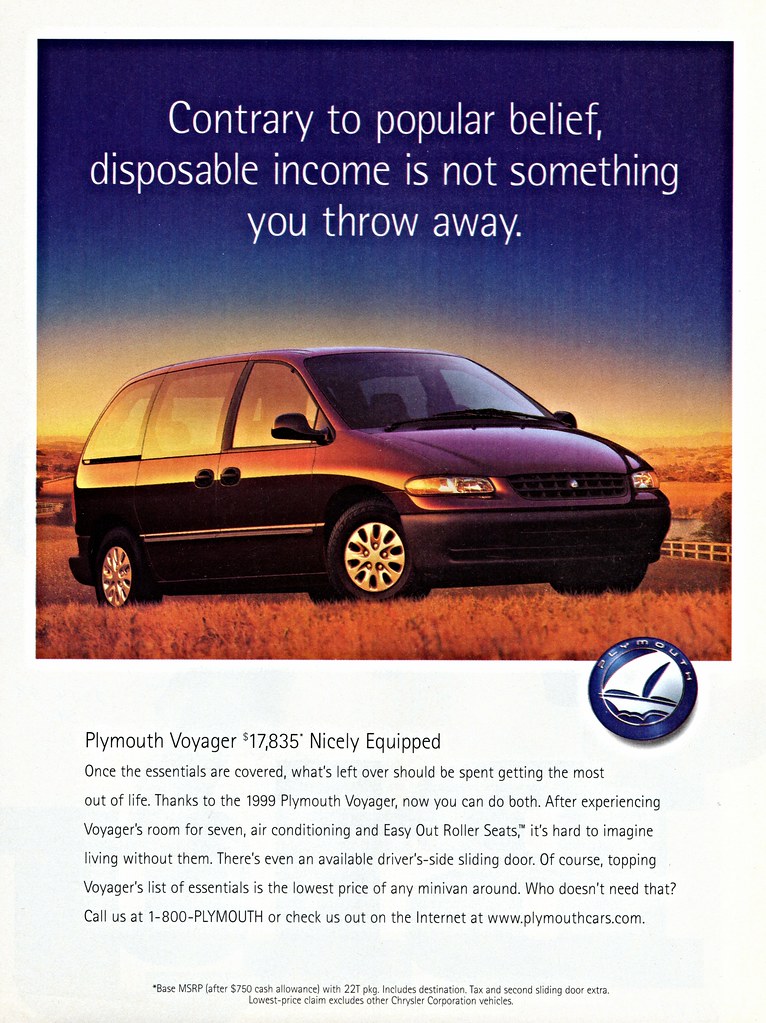
2. **Plymouth**
Plymouth was established by Chrysler in 1928, aiming to capture the entry-level market with affordable and reliable vehicles. It quickly became known for its accessible models like the Valiant and Duster, which resonated well with families seeking practical transportation. The brand enjoyed significant popularity for many years, offering dependable and attractive cars such as the Fury and the Voyager.
Despite its early successes, Plymouth’s trajectory began to shift dramatically by the late 20th century. A critical factor in its decline was the intensifying competition from foreign automakers who offered increasingly attractive and often more fuel-efficient options. Simultaneously, Plymouth suffered from significant overlap with other brands within the Chrysler family, leading to internal competition and a fragmented market presence.
The brand’s distinct appeal was gradually eroded as Plymouth vehicles began to share an increasing number of components and designs with other Chrysler models. This lack of differentiation, combined with strategic missteps in marketing and product development throughout the 1990s, caused Plymouth’s sales to falter dramatically. Consumers found little compelling reason to choose a Plymouth over a Dodge or a Chrysler offering that was often mechanically identical.
Lacking a unique identity and struggling to innovate in a meaningful way, Plymouth became expendable in Chrysler’s long-term strategy. The company’s decision to discontinue the brand in 2001 brought an end to its 73-year run in the American auto market. It served as a stark reminder that even a brand built on reliability and affordability needs a clear, unique purpose to survive.
Read more about: Unearthing the Mustang’s Hidden History: 14 Surprising Facts Even Die-Hard Fans Might Not Know
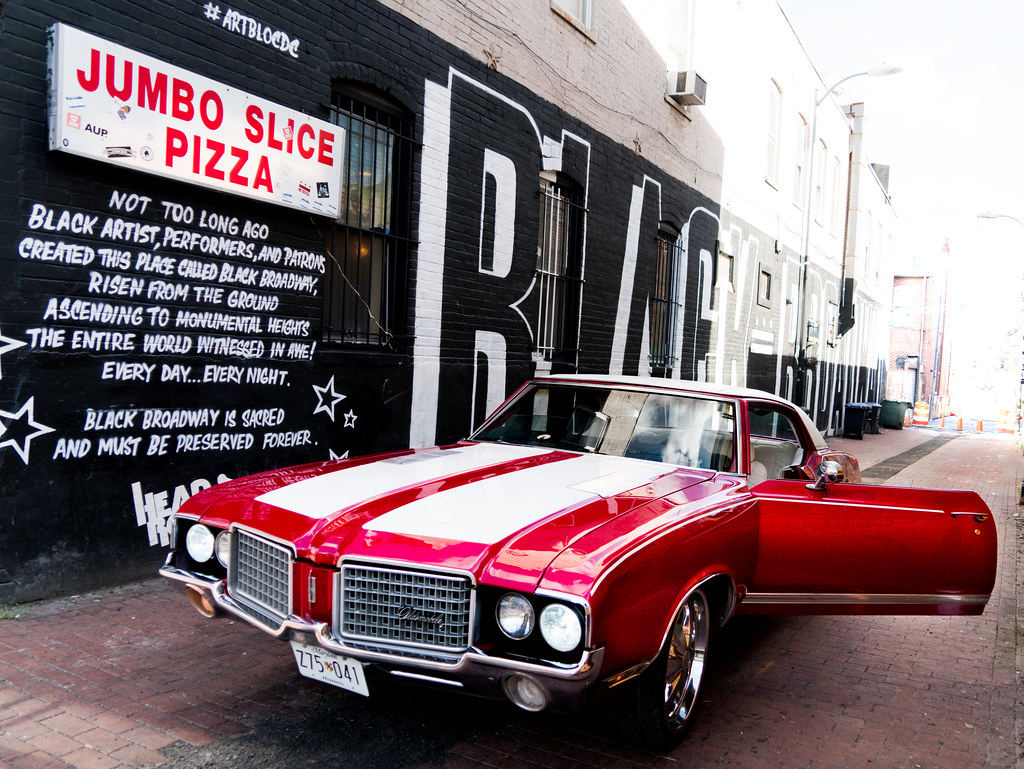
3. **Oldsmobile**
Oldsmobile stands as one of the oldest car brands in the world, tracing its origins back to 1897. Throughout its extensive history, Oldsmobile was a beacon of innovation and an early adopter of groundbreaking technologies. It pioneered significant advancements, including the introduction of the first automatic transmission, and is even credited by some with launching the first muscle car, the iconic “Rocket 88.”
However, despite this rich legacy of invention and contribution to automotive design, Oldsmobile found itself struggling to maintain a clear brand identity by the late 20th century. General Motors’ decision to standardize designs across its vast portfolio of brands, while perhaps intended for efficiency, ultimately hurt Oldsmobile’s uniqueness. Its models began to lose their distinctive characteristics, becoming less distinguishable from Chevrolet or Buick vehicles.
This erosion of a unique selling proposition, coupled with an aging customer base that was not being adequately replaced by younger buyers, led to a persistent decline in sales. Oldsmobile was caught in a difficult position, competing directly with other General Motors brands for the same market segments without sufficient differentiation to justify its existence.
After several earnest attempts to revitalize the brand and inject new life into its lineup, GM ultimately concluded that the effort was unsustainable. The difficult decision was made to phase out Oldsmobile, and the brand officially ceased operations in 2004, concluding a remarkable 107-year legacy in the automotive industry. It remains a poignant example of how even pioneers can struggle to adapt to changing market dynamics.
Car Model Information: 2019 BMW X3 xDrive30i
Name: Oldsmobile 88
Caption: 1996 Oldsmobile Eighty Eight LS
Manufacturer: Oldsmobile
ModelYears: 1949–1999
Class: Full-size car
Layout: FR layout
Predecessor: Oldsmobile L-Series
Successor: Oldsmobile Aurora
Categories: 1940s cars, 1950s cars, 1960s cars, 1970s cars, 1980s cars
Summary: The Oldsmobile 88 (marketed from 1989 on as the Eighty Eight) is a full-size car that was produced by the Oldsmobile Division of GM from 1949 until 1999. From 1950 until 1974, the 88 was the division’s most popular line, particularly the entry-level models such as the 88 and Dynamic 88. The 88 series was also an image leader for Oldsmobile, particularly in the model’s early years (1949–51), when it was one of the best-performing automobiles, thanks to its relatively small size, light weight, and advanced overhead-valve high-compression V8 engine. This engine, originally designed for the larger and more luxurious C-bodied 98 series, also replaced the straight-8 on the smaller B-bodied 78. With the large, high performance Oldsmobile Rocket V8, the early Oldsmobile 88 is considered by some to be the first muscle car.
Naming conventions used by GM since the 1910s for all divisions used alphanumeric designations that changed every year. Starting after the war, Oldsmobile changed their designations and standardized them so that the first number signified the chassis platform, while the second number signified how many cylinders. A large number of variations in nomenclature were seen over this long model run — Super, Golden Rocket, Dynamic, Jetstar, Delta, Delmont, Starfire, Holiday, LS, LSS, Celebrity, and Royale were used at various times with the 88 badge, and Fiesta appeared on some station wagons in the 1950s and 1960s. The name was more commonly shown as numerals in the earlier years (“Delta 88”, for example) and was changed to spell out “Eighty Eight” starting in 1989.
Get more information about: Oldsmobile 88
Buying a high-performing used car >>>
Brand: Oldsmobile Model: Rocket 88
Price: $20,007 Mileage: 86,776 mi.
Read more about: The Automotive Exodus: Unpacking the 14 Critical Reasons Why Diesel Engines Are Fading from Our Markets
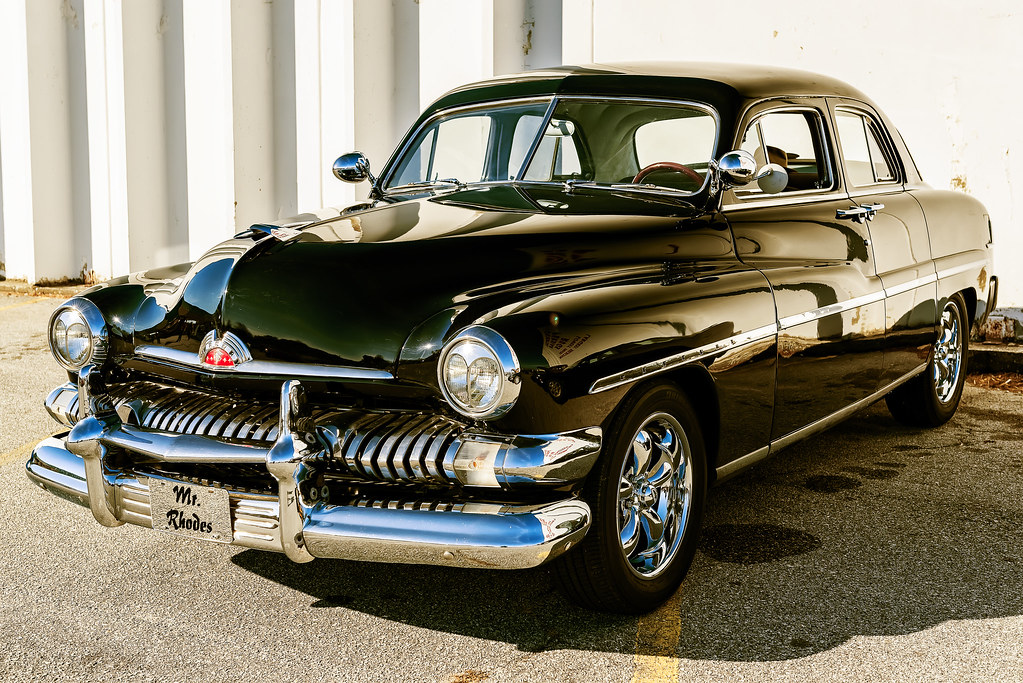
4. **Mercury**
Ford introduced Mercury in 1938 with a clear strategic goal: to position it as a mid-range brand, bridging the gap between its economical Ford models and the luxurious offerings of Lincoln. This positioning was intended to cater to customers seeking more refinement than a standard Ford but who weren’t quite ready for the top-tier luxury of a Lincoln. The brand did experience periods of notable success, particularly in the post-World War II era, with popular models like the Cougar and the Grand Marquis becoming well-recognized.
However, Mercury’s enduring challenge was its struggle to establish and maintain a truly distinct identity. Far too often, Mercury vehicles were perceived as little more than slightly upgraded versions of Ford models, with marginal differences that failed to justify their separate branding or higher price points. This strategy of rebadging and minimal differentiation ultimately confused consumers and diluted Mercury’s appeal.
As consumer preferences evolved and the market became increasingly saturated, the lack of a strong, independent brand identity became an insurmountable hurdle. Sales for Mercury steadily declined over the years, reflecting a diminishing interest from buyers who saw little unique value in its offerings. The brand struggled to offer compelling reasons for its existence when virtually identical alternatives were available from its parent company.
In the wake of these persistent challenges, Ford Motor Company shifted its focus towards strengthening its core Ford brand and elevating its luxury Lincoln line. With a clear direction for its other marques, Mercury became expendable in Ford’s long-term vision. Consequently, Ford made the decision to discontinue the Mercury brand in 2010, marking the end of its 72-year journey as an attempt to occupy a distinct niche in the American automotive market.
Read more about: From Cataclysm to Celluloid: 14 Real-Life Historical Events That Ignited Hollywood’s Most Intense Thrillers
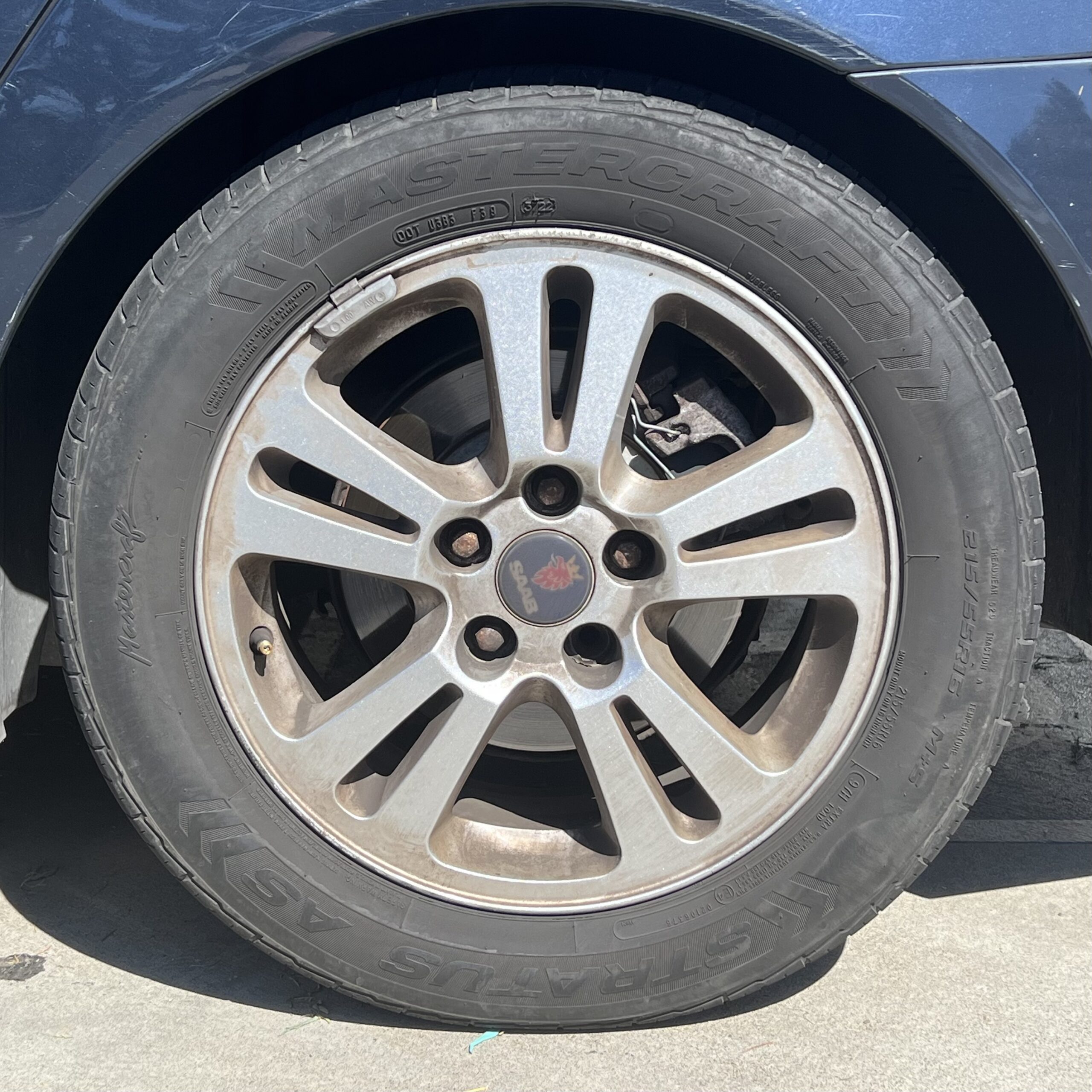
5. **Saab**
Saab, a Swedish automaker, embarked on its automotive journey from an unexpected background: aircraft manufacturing. This unique heritage deeply influenced its approach to vehicle design and engineering, imbuing its cars with a distinctive character. Saab vehicles were renowned for their quirky designs, aviation-inspired features, and a pioneering emphasis on aerodynamics and safety, which quickly garnered a devoted cult following.
Models such as the Saab 900 and 9-3 were consistently praised for their innovation, robust performance, and particularly for their turbocharged engines, which offered an exhilarating driving experience. Saab truly stood apart from the conventional automotive landscape, appealing to a segment of buyers who valued individuality, advanced engineering, and a forward-thinking approach to car manufacturing.
However, despite this loyal fan base and engineering prowess, financial instability became a persistent shadow over the company. Saab struggled to maintain its independence and financial viability, often exacerbated by a series of changes in ownership and partnerships that failed to provide the necessary stability. General Motors acquired Saab in 2000, a move intended to secure the Swedish brand’s future.
Unfortunately, GM’s ownership often meant a dilution of Saab’s unique character. The introduction of models like the Opel-based 900 in 1994 signaled a departure from its independent engineering roots. Later, the poorly received 9-2X and 9-7X, which were essentially rebadged Subaru WRX and Chevrolet Trailblazer models respectively, further alienated Saab’s traditional customer base. Sales collapsed dramatically in 2008, and GM, facing its own financial crisis, eventually sold Saab. Unable to secure stable funding to continue operations, Saab filed for bankruptcy in 2011, and GM shuttered the brand in the U.S. in 2010, bringing an end to its distinctive and innovative legacy.
Read more about: Stretch Out in Style: 10 Luxury Sedans Offering Expansive Legroom for Discerning Drivers and Passengers
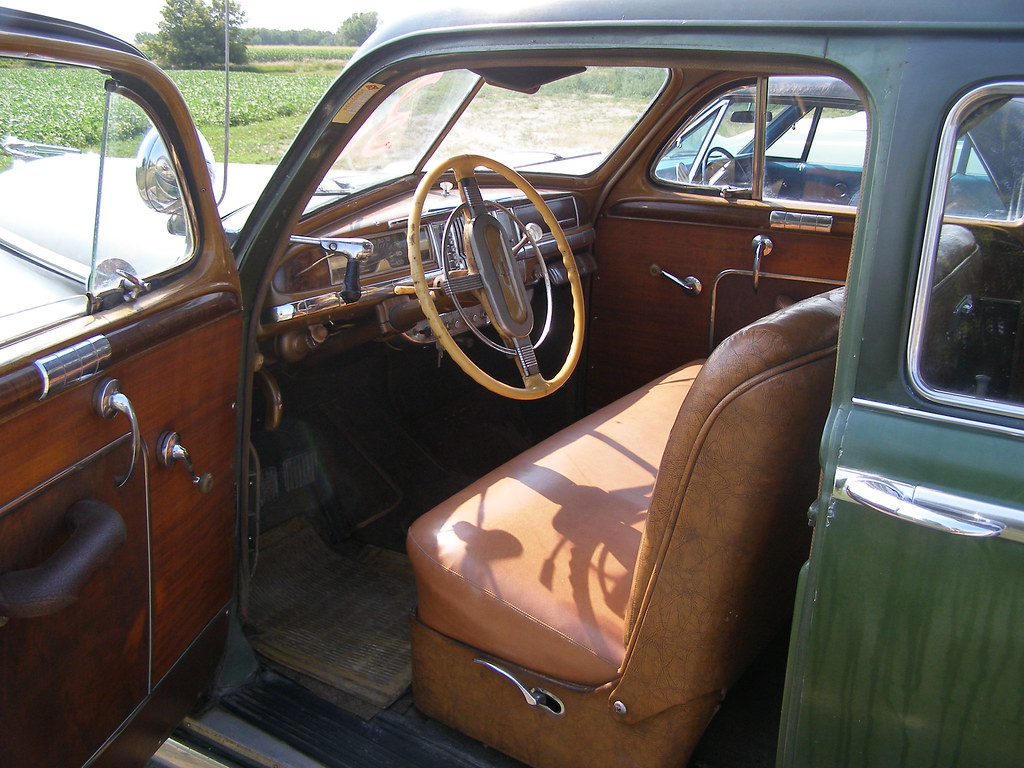
6. **DeSoto**
DeSoto was introduced by Chrysler in 1928, an ambitious move designed to carve out a competitive space against established rivals like Buick and Oldsmobile. The brand quickly became recognized for its stylish, mid-priced cars, which offered a blend of appealing aesthetics and solid performance that resonated with a segment of the American public. DeSoto aimed to provide a step up from more basic offerings without reaching the premium price points of true luxury vehicles.
However, the brand’s journey was complicated by several internal and external pressures. One significant challenge stemmed from intense internal competition within Chrysler’s own expansive portfolio of brands. DeSoto often found itself battling for market share with other Chrysler divisions that offered similar vehicles, leading to a lack of clear differentiation and a fragmented consumer base.
The economic climate also played a crucial role in DeSoto’s struggles. The 1958 recession hit the automotive market particularly hard, impacting sales across the board, and DeSoto, already grappling with its identity, felt the downturn acutely. Consumers became more cautious with their spending, often opting for either more economical choices or investing in truly differentiated luxury.
Ultimately, these compounding factors proved too much for the brand to overcome. Chrysler decided to discontinue DeSoto in 1961, after a relatively short run of just 32 years of production. Its demise serves as a testament to the fact that even a well-intended brand, backed by a major automaker, can struggle to survive without a consistently strong market position and clear value proposition.
Read more about: 11 Genius Hacks to Keep Your Car from Turning into a Pizza Oven This Summer
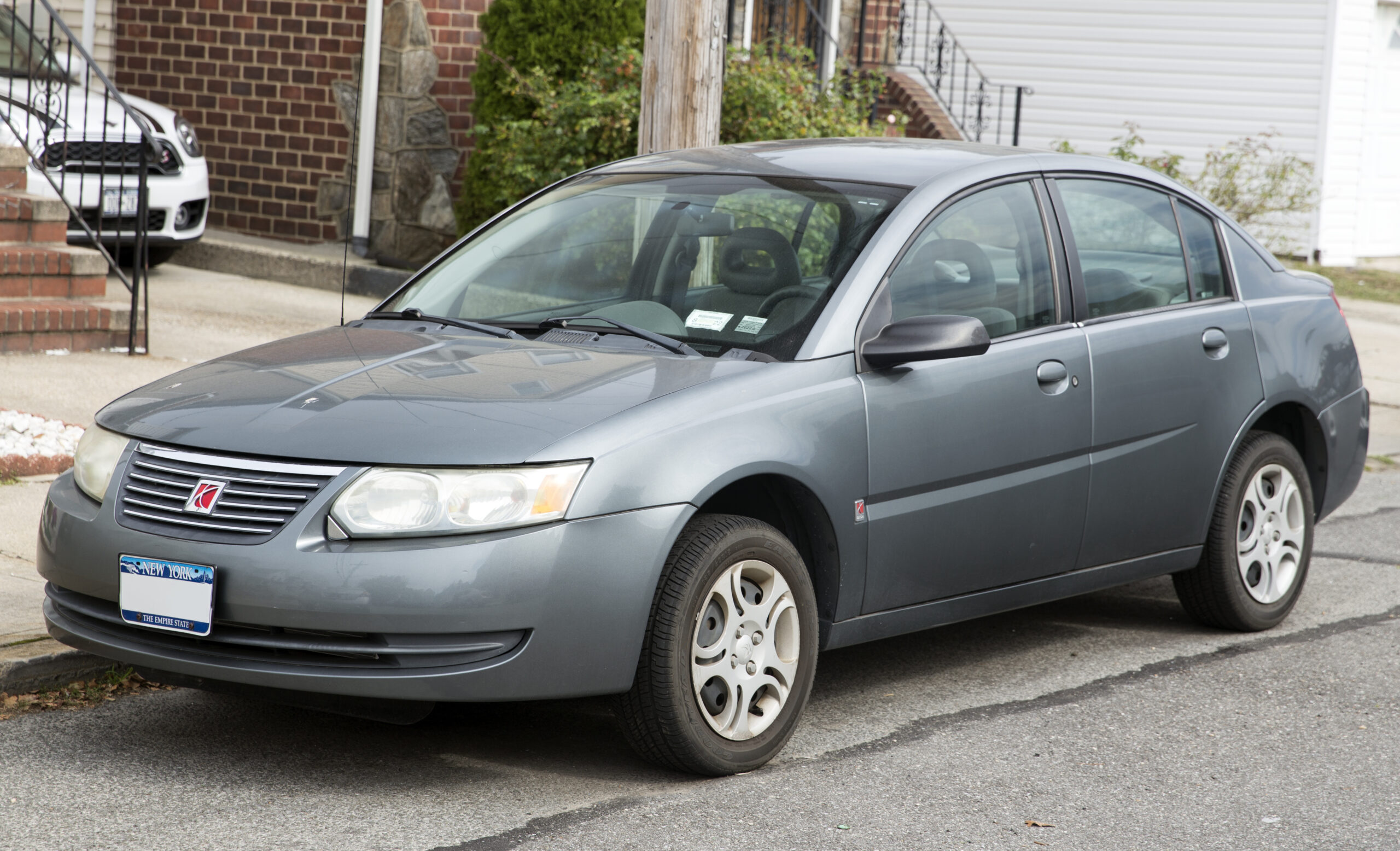
7. **Saturn**
Saturn was born out of General Motors in 1985 with a revolutionary vision: to be a “different kind of car company.” This venture was GM’s ambitious attempt to fend off the surging popularity of Japanese imports, focusing on a unique sales model and innovative manufacturing practices. Saturn quickly distinguished itself with a no-haggle pricing policy, dedicated assembly lines, and a customer-focused service approach that aimed to redefine the car-buying experience. Its initial success was notable, particularly with its plastic-bodied compacts and polymer body panels, which offered durability and novel design.
Despite its promising start and the integration of some Japanese manufacturing techniques, Saturn faced significant internal hurdles. The quality of its vehicles, while innovative in concept, was sometimes perceived as “distinctly American,” struggling to match the robust reliability of its Asian competitors. More critically, GM, which had poured an estimated $5 billion into the venture, found that this massive investment ultimately ate up crucial redesign budgets not just for Saturn but also for other GM divisions.
This allocation issue meant that GM struggled to keep Saturn’s lineup fresh and competitive. It took nearly a decade for Saturn to expand its model range, and when new models did arrive, they were increasingly based on other GM products, diluting the “different kind of car company” ethos. The brand’s unique identity, which was its primary appeal, slowly eroded as it became more integrated into the larger GM structure.
As sales foundered and the brand lost its unique edge, Saturn became vulnerable. The devastating 2008 financial crisis delivered the final blow to General Motors, forcing the company into bankruptcy reorganization. As part of this restructuring, GM made the painful decision to shutter several brands, with Saturn among them. A potential deal to sell Saturn to Roger Penske ultimately fell through, sealing the brand’s fate. In 2010, GM’s innovative, albeit troubled, experiment came to an ignominious end, highlighting the immense challenges of creating a new corporate culture and product strategy within an established automotive giant.
Read more about: Inside the Mind of a Billionaire: 14 Strategic Moves That Propelled Jeff Bezos to 12-Figure Deals

8. **Hummer**
Born from military roots, Hummer brought its rugged, utilitarian appeal to the civilian market, quickly symbolizing opulence and adventure. Based on the iconic military Humvee, these large SUVs gained significant popularity in the late 1990s and early 2000s, attracting buyers who desired an unmistakable presence and formidable off-road capabilities. For a period, owning a Hummer blended luxury with raw power, resonating strongly with a specific market segment.
However, the very characteristics that made Hummer popular—its massive size and potent engines—also fueled its eventual downfall. As environmental awareness grew and fuel prices ascended, public perception of gas-guzzling vehicles shifted dramatically. The Hummer, with its notoriously low fuel efficiency, became a target for criticism, losing its appeal among increasingly eco-conscious and budget-minded consumers.
This shift in consumer preferences, coupled with a fiercely competitive SUV market, led to a persistent decline in sales. General Motors, facing its own significant financial troubles and undergoing massive restructuring, found itself in a difficult position. The brand, once an icon of American automotive excess, no longer fit into GM’s leaner, more sustainable future vision.
Ultimately, the 2008 global financial crisis delivered the final blow. As part of its post-bankruptcy restructuring, GM made the painful decision to discontinue Hummer in 2010. Its demise serves as a potent reminder that even a brand built on a strong, unique image must adapt to evolving market conditions and consumer values to survive.
Car Model Information: 2003 Hummer H2
Name: High Mobility Multipurpose Wheeled Vehicle (HMMWV)
Caption: M1151 Enhanced Armament Carrier
Origin: United States
Type: truck,Military light utility vehicle,Infantry mobility vehicle
IsVehicle: true
Service: 1985–present
Wars: Gulf War
Manufacturer: AM General
UnitCost: Format price
ProductionDate: January 2, 1985 – present
Number: 281,000
Weight: 5200 to
Abbr: on
Length: 15 ft
Width: 7 ft
Height: 6 ft
PrimaryArmament: #Design features
Engine: Detroit Diesel V8 engine#6.2L,V8 engine
Transmission: 3-speed automatic or 4-speed automatic
Suspension: Independent 4×4
FuelCapacity: 25 U
VehicleRange: convert
Speed: 55 mph (89 km/h) at max gross weight
Categories: 1980s cars, AM General vehicles, All-wheel-drive vehicles, All articles lacking reliable references, All articles needing additional references
Summary: The High Mobility Multipurpose Wheeled Vehicle (HMMWV; colloquial: Humvee) is a family of light, four-wheel drive military trucks and utility vehicles produced by AM General. It has largely supplanted the roles previously performed by the original jeep, and others such as the Vietnam War-era M151 Jeep, the M561 “Gama Goat”, their M718A1 and M792 ambulance versions, the Commercial Utility Cargo Vehicle, and other light trucks. Primarily used by the United States military, it is also used by numerous other countries and organizations and even in civilian adaptations.
The Humvee saw widespread use in the Gulf War of 1991, where it navigated the desert terrain; this usage helped to inspire civilian Hummer versions. The vehicle’s original unarmored design was later seen to be inadequate and was found to be particularly vulnerable to improvised explosive devices in the Iraq War. The U.S. hastily up-armored select models and replaced frontline units with the MRAP. Under the Joint Light Tactical Vehicle (JLTV) program, in 2015 the U.S. Army selected the Oshkosh L-ATV to replace the vehicle in frontline U.S. military service.
Get more information about: Humvee
Buying a high-performing used car >>>
Brand: Hummer Model: Hummer
Price: $12,490 Mileage: 152,679 mi.
Read more about: 15 Trucks That Can Haul Three Times the Average Pickup’s Capacity: Your Ultimate 2025 Hauling Guide
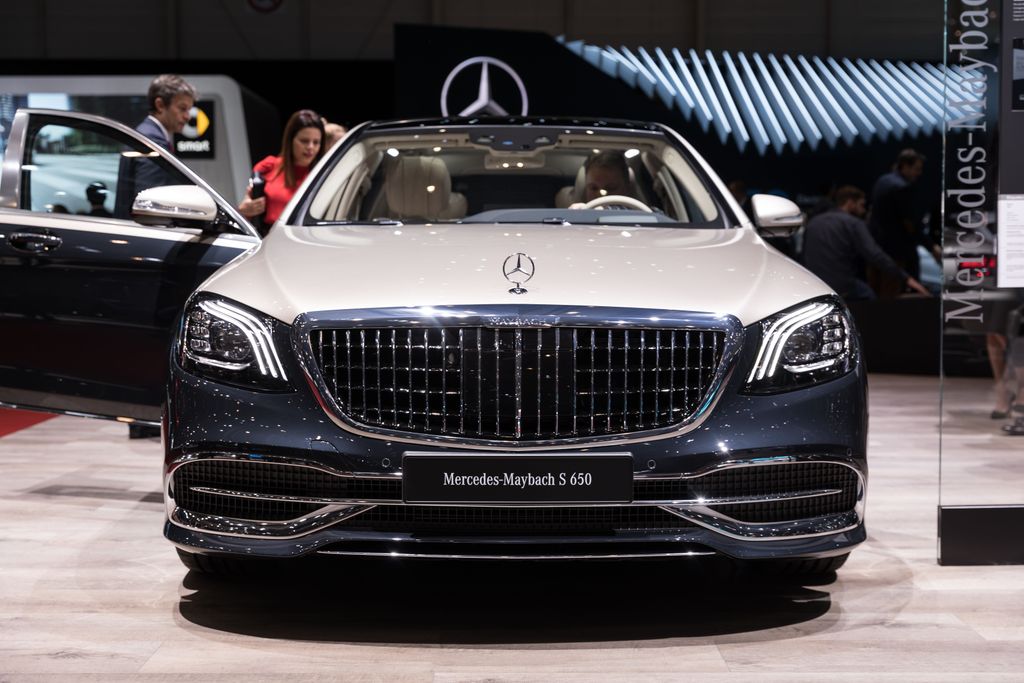
9. **Maybach**
The historic Maybach nameplate was dramatically revived by Daimler AG in 2002, aiming to challenge ultra-luxury titans like Rolls-Royce and Bentley. The intention was to offer unparalleled opulence and bespoke craftsmanship. Mercedes sought to recreate the prestige of its historical counterpart, positioning the Maybach 57 and 62 sedans as the pinnacle of automotive luxury.
Despite the meticulous engineering and lavish interiors, sales figures remained profoundly disappointing. A critical factor was the lack of clear visual differentiation from its parent company’s flagship, the Mercedes-Benz S-Class. For vehicles costing over $300,000, many buyers felt the exterior design didn’t convey the exclusivity expected, often appearing too similar to a considerably less expensive Mercedes.
Furthermore, the brand struggled with limited recognition in a segment where heritage and established prestige held immense sway. While the Maybach name had historical significance, it lacked the immediate global recognition and loyal following of Rolls-Royce and Bentley. This made justifying the exorbitant price challenging, especially when competitors offered stronger, more distinct brand narratives.
Facing consistently low sales—only 600 cars sold in its best year, a third of its target—Daimler AG concluded the standalone Maybach brand was not financially viable. The decision was made to discontinue it as a distinct entity in 2013. However, its ultra-luxury legacy continues, with Maybach re-emerging as an exclusive, top-tier trim level for high-end Mercedes-Benz S-Class models and SUVs, acknowledging its cachet was better integrated.
Car Model Information: 2004 Maybach Type 57 Base
Name: Maybach 57/62 (W240/V240)
Caption: Maybach 62, with a Maybach 57 on the right
Manufacturer: DaimlerChrysler
Production: April 2002 – February 2013,3,321 produced
ModelYears: 2003–2013
Assembly: Sindelfingen
Designer: Olivier Boulay
Class: Ultra-luxury car
BodyStyle: Sedan (automobile)
Related: ubl
Layout: Front-engine, rear-wheel-drive layout
Engine: Mercedes-Benz M275 engine#M285/M285 AMG,twin-turbo,V12 engine
Transmission: 5G-Tronic,Automatic transmission
Wheelbase: cvt
Length: ubl
Width: cvt
Height: cvt
Weight: 2735 kg
Abbr: on (62)
Predecessor: Mercedes-Benz 600
Successor: Mercedes-Maybach S600
Categories: 2010s cars, All articles with unsourced statements, Articles with short description, Articles with unsourced statements from August 2020, Articles with unsourced statements from December 2021
Summary: The Maybach 57 (chassis code W240) and 62 (chassis code V240) were the first automobile models of the Maybach brand since its revival by DaimlerChrysler AG (now Mercedes-Benz Group AG). They are derived from the Mercedes-Benz Maybach concept car presented at the 1997 Tokyo Motor Show. The concept car was based on the Mercedes-Benz W140 S-class sedan platform, as were the production models. The Luxury Brand Status Index 2008 placed the Maybach in first place, ahead of Rolls-Royce and Bentley. The models ceased production in February 2013 due to continued financial losses for the brand, with sales at one-fifth the level of the profitable Rolls-Royce models.
Get more information about: Maybach 57 and 62
Buying a high-performing used car >>>
Brand: Maybach Model: 57
Price: $45,500 Mileage: 34,254 mi.
Read more about: Navigating the High-Stakes World of Luxury Auto Maintenance: The 12 Most Expensive Car Repairs and How They Impact 15 Famous Musicians
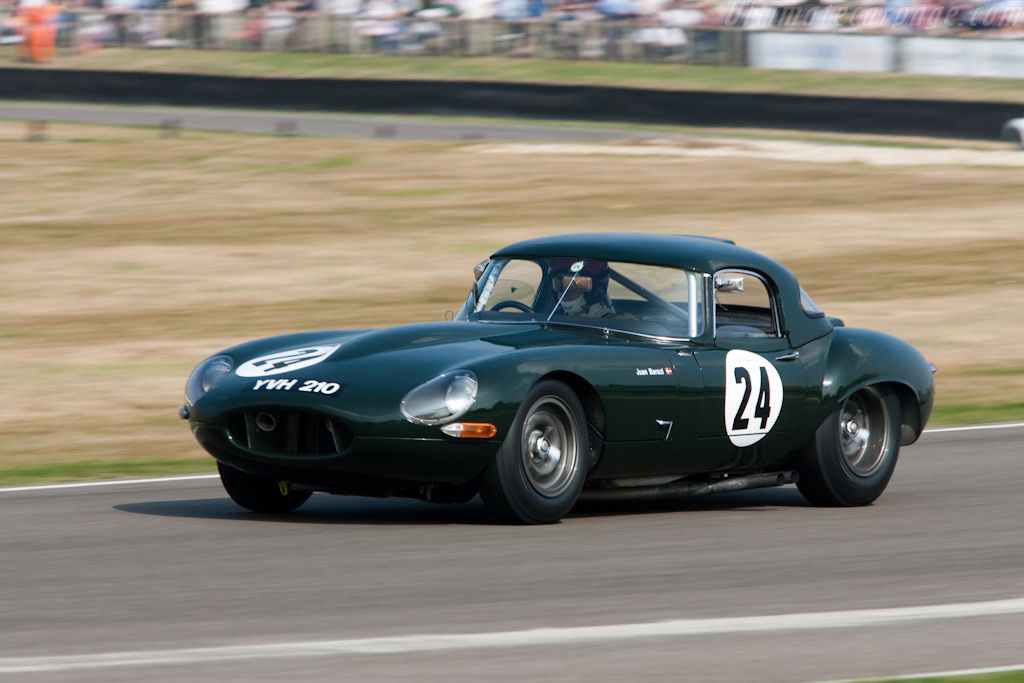
10. **Eagle**
Eagle emerged following Chrysler’s acquisition of American Motors Corporation (AMC) in 1987, primarily motivated by the profitable Jeep division. Chrysler leveraged AMC’s remaining lineup by creating a new brand, Eagle, conceived as an upscale, import-fighting marque. It even adopted the patriotic name of the AMC Eagle 4×4, though not the car itself.
The brand’s initial offerings were a mix of rebadged models from international partners, including the Renault-based Premiere sedan and the Mitsubishi-designed Summit. While competitive, these vehicles often lacked a truly distinct identity. This rebadging strategy, though cost-effective, confused consumers who could find virtually identical models under other marques.
Eagle’s best-known product, the Talon, a sporty coupe developed with Mitsubishi, gained attention for its turbocharged engine and available all-wheel drive. Yet, even with the introduction of Chrysler’s acclaimed LH cars like the Eagle Vision, the underlying issue persisted: most of Eagle’s models were available through other brands, making it difficult to carve out a unique market niche or attract a dedicated customer base.
Despite substantial marketing efforts, sales remained persistently weak. The brand struggled to offer compelling reasons for its existence when similar offerings were available from Jeep or other Chrysler divisions. By 1996, Chrysler combined the Jeep-Eagle and Chrysler-Plymouth divisions, signaling diminishing commitment. Ultimately, with its identity diluted and sales faltering, Chrysler discontinued Eagle in 1998, just 11 years after its creation, ending an ambitious, yet unsuccessful, venture.
Read more about: The Billion-Dollar Ballgame: Unveiling Forbes’ 15 Most Valuable Sports Franchises and What Drives Their Astronomical Worth
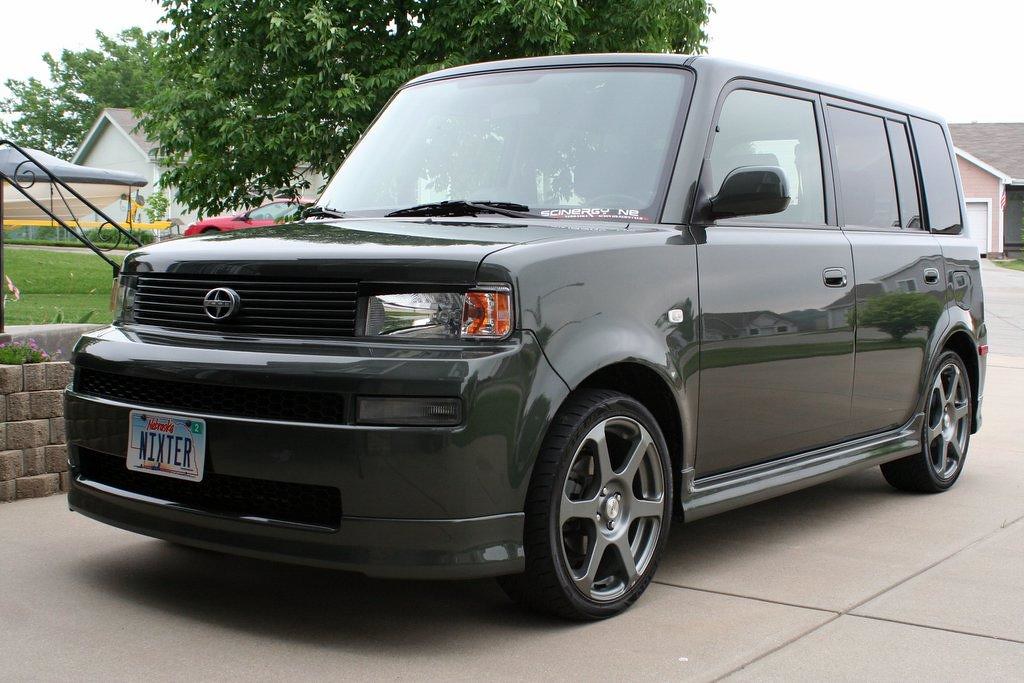
11. **Scion**
Toyota launched Scion in 2003 with the ambitious goal of attracting younger buyers, often referred to as “Generation Y.” The brand differentiated itself with unique, boxy designs, a simplified no-haggle pricing process, and an emphasis on customization. Scion aimed to embody a youthful, rebellious spirit, offering models like the xA, xB, and tC that stood apart from Toyota’s more conservative vehicles.
Initially, Scion enjoyed success with its quirky designs and accessible pricing. However, the brand struggled significantly to maintain momentum and keep its lineup fresh and relevant. Rapid evolution of youth culture meant constant innovation was needed to stay appealing, a challenge it consistently failed to meet with new models.
Another key issue was its limited model range and increasing difficulty differentiating Scion products from Toyota’s own lineup. As the market shifted and younger buyers sought more than novelty, Scion’s unique appeal waned. The no-haggle pricing, once a differentiator, became less impactful as internet transparency simplified price comparisons across all brands.
As Scion’s sales steadily declined and its distinct appeal eroded, Toyota discontinued the brand in 2016. While some popular models like the FR-S (Toyota 86) and iA (Yaris iA) were absorbed into the main Toyota lineup, the Scion experiment concluded. It highlighted the immense difficulty of launching and sustaining a separate brand tailored for a volatile demographic within an established automotive giant.
Car Model Information: 2011 Scion xB Base
Name: Scion xB
Manufacturer: Toyota
Production: June 2003 – December 2015
ModelYears: 2004–2015
Class: unbulleted list
BodyStyle: hatchback
Aka: unbulleted list
Layout: FF layout
Successor: Scion iM
Categories: 2010s cars, All articles with unsourced statements, Articles with short description, Articles with unsourced statements from April 2024, Articles with unsourced statements from December 2016
Summary: The Scion xB is a five-door compact hatchback that was produced by Scion, a former marque of Toyota. Produced from the 2004 to 2015 model years, it was one of the two launch models of the Scion marque, alongside the Scion xA.
The first-generation xB was a rebadged version of the subcompact Toyota bB designed for the American market, with marketing and options appealing to a young adult demographic as part of Scion’s overall positioning. In 2007, Scion launched a second-generation xB, which was retooled as a compact car based on the E150 series Corolla; this model would also be sold internationally as the Toyota Corolla Rumion in Japan and the Toyota Rukus in Australia.
Get more information about: Scion xB
Buying a high-performing used car >>>
Brand: Scion Model: xB
Price: $13,999 Mileage: 39,140 mi.
Read more about: Beyond the Hype: 12 Underestimated Coupes That Quietly Redefined Value and Performance
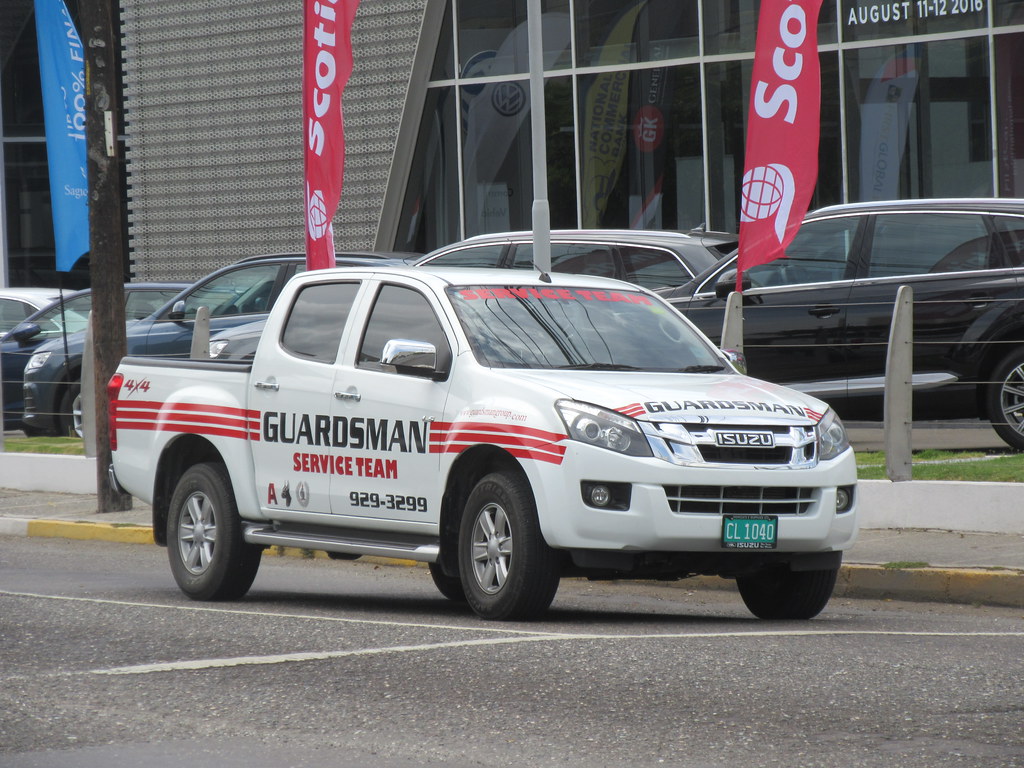
12. **Isuzu**
Isuzu, a Japanese automaker, carved a significant niche in the American market during the 1980s and 1990s, known for its rugged and reliable SUVs and trucks. Models like the Trooper and Rodeo became popular for consumers seeking durable utility vehicles. Isuzu built a reputation for tough, go-anywhere machines offering practical functionality and value, making it competitive in the burgeoning SUV segment.
However, as the automotive landscape grew more competitive, Isuzu faced increasing pressure from both domestic and other foreign manufacturers. The market saturated with diverse SUV and truck options, many offering advanced features, greater refinement, or aggressive pricing. Isuzu struggled to keep pace, finding it challenging to invest in the extensive R&D needed to refresh its lineup consistently.
A significant factor in Isuzu’s decline was its limited passenger vehicle lineup. While its global commercial vehicles performed well, its American passenger division heavily relied on a few core SUV models. This lack of diversity meant that when consumer preferences shifted or competition intensified, Isuzu had fewer alternative offerings, making it vulnerable to market fluctuations.
Eventually, heightened competition, a constrained product portfolio, and declining passenger vehicle sales became insurmountable. Isuzu strategically exited the U.S. passenger vehicle market in 2009. While the brand successfully continues commercial vehicle manufacturing globally, its departure from the American consumer market underscored the challenges of maintaining relevance and competitiveness without a broad and continually updated product range.
Car Model Information: 1998 Isuzu Trooper S
Name: Isuzu Trooper
Caption: Second generation Isuzu Trooper (United States)
Manufacturer: Isuzu
Production: 1981–2002
Assembly: Fujisawa, Kanagawa
Class: Full-size car,SUV
Layout: front engine, selectable four-wheel-drive
Successor: ubl
Categories: 1990s cars, 2000s cars, All-wheel-drive vehicles, All articles needing additional references, All articles with unsourced statements
Summary: The Isuzu Trooper is a full-size SUV manufactured and marketed by Isuzu between September 1981 and September 2002 over two generations, the first, produced between 1981 and 1991; and the second (UBS) produced between 1991 and 2002, the latter with a mid-cycle refresh in 1998. In its earliest iterations, the Trooper was based on the company’s first generation Isuzu Faster/Chevrolet LUV pickup.
Marketed in the Japanese domestic market, as the Isuzu Bighorn, Isuzu marketed it internationally primarily as the Trooper, and in other markets as the Acura SLX (USA), Chevrolet Trooper, Subaru Bighorn, SsangYong Korando Family, Honda Horizon, Opel Monterey, Vauxhall Monterey, Holden Jackaroo, and Holden Monterey.
In the United States, for the first generation, which was initially solely offered with two doors, Isuzu was required to comply with the 25% U.S. Chicken Tax on two-door trucks. Prior to its formal introduction Paul Geiger, product-development manager at American Isuzu Motors, noted the Roman numeral “II” designated the truck version (with the rear seat as a mandatory $300 option) and “I” indicating the passenger version with a rear seat included along with certain other features. Isuzu thus marketed the first generation two-door as the Trooper II, and when introducing the four-door retained the Trooper II nameplate. Isuzu never formally marketed a Trooper I, and Car & Driver later inferred the company had changed their mind about the suffix before the SUV went on sale.
Isuzu offered the Trooper initially with four-cylinder motor, four-speed manual transmission, and part-time four-wheel drive, subsequently adding amenities and luxuries, including optional air-conditioning, power windows, and a more powerful V6 engine. The second generation was available with two-wheel- or four-wheel drive.
Competitors included the Toyota Hilux Surf, Mitsubishi Pajero, and Nissan Terrano.
Get more information about: Isuzu Trooper
Buying a high-performing used car >>>
Brand: Isuzu Model: Trooper
Price: $3,900 Mileage: 181,685 mi.
Read more about: Recall These? 15 Trucks That Went From Trendy to Tacky.
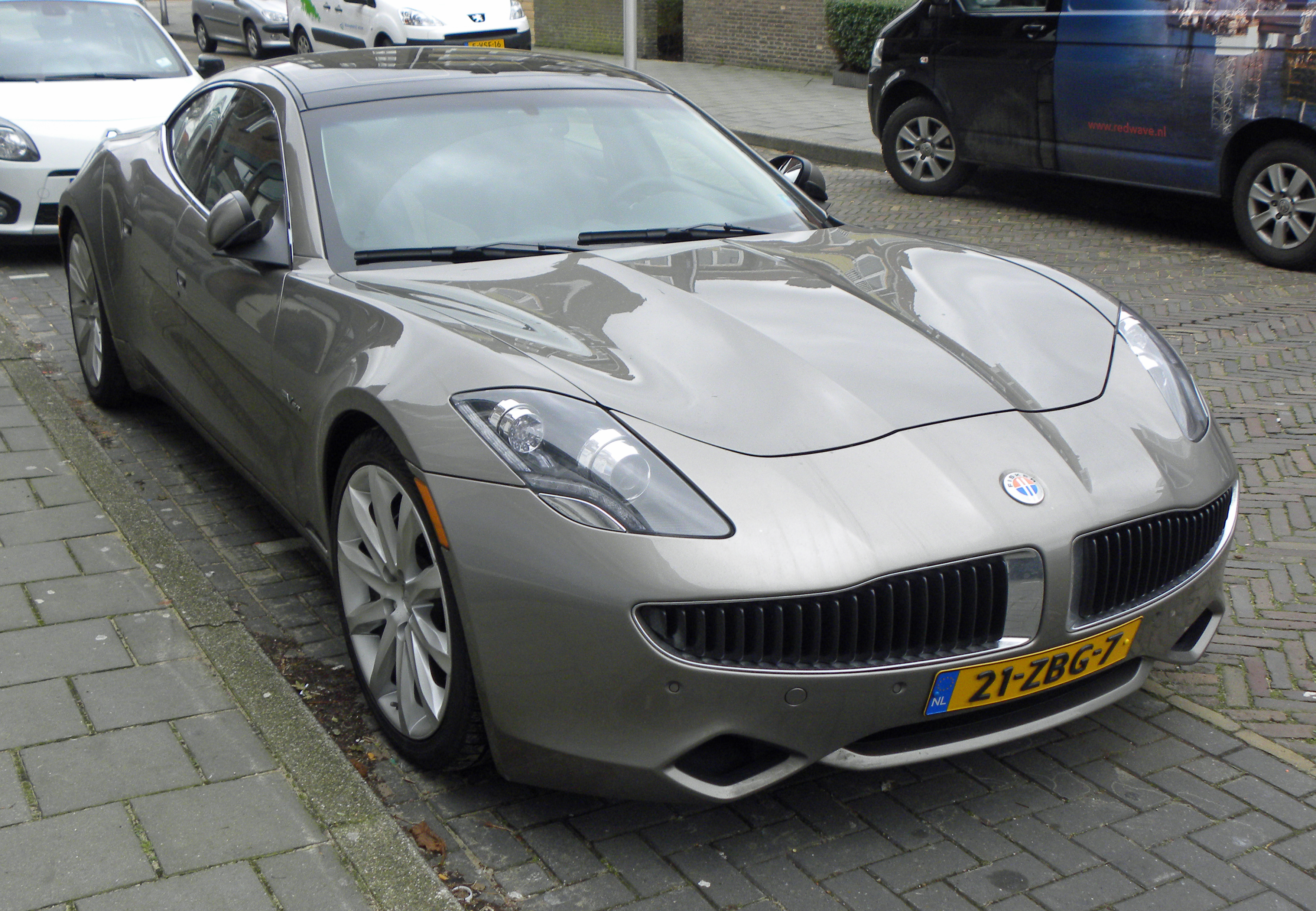
13. **Fisker**
Fisker Automotive emerged as an American company with a grand vision: to produce luxury plug-in hybrid electric vehicles. Founded in 2007 by automotive designer Henrik Fisker, the company gained considerable attention for its Karma sedan, boasting a strikingly beautiful, futuristic design. The Karma was positioned as a premium, eco-friendly alternative in the luxury segment, appealing to early adopters interested in advanced technology.
Despite its innovative design and initial buzz, Fisker quickly encountered formidable obstacles, typical of ambitious automotive startups. The company was plagued by persistent production delays, struggling to scale manufacturing to meet demand. These delays frustrated customers and drained financial resources, impacting its ability to deliver on promises.
Compounding production woes were significant quality issues surfacing in early models. Reports of technical glitches, battery problems, and recalls tarnished the brand’s image, undermining consumer confidence. For a luxury vehicle, reliability and flawless execution are paramount, and Fisker’s struggles here proved a critical blow.
Ultimately, these compounding factors—production challenges, quality concerns, and severe financial distress—proved too much. Fisker filed for bankruptcy in 2013, just five years after its founding. While its bold design philosophy impacted the EV landscape, Fisker’s story became a cautionary tale of how revolutionary ideas can falter without robust execution and financial stability in the competitive automotive world.
Car Model Information: 2018 Karma Revero
Name: Fisker Karma
Manufacturer: Fisker Automotive
Production: 2011–2012
Assembly: Uusikaupunki
Class: Full-size car,Luxury vehicle
BodyStyle: sedan (automobile)
Layout: Front-engine, rear-wheel-drive layout
Related: ubl
Platform: Chevrolet Volt#Concept vehicle
Engine: GM Ecotec engine#LNF,Straight-four engine
Motor: 120 kW
Abbr: on
Battery: 20.1 kWh
Range: 230 mi
ElectricRange: 32 mi
Drivetrain: PHEV,Hybrid vehicle drivetrain#Series hybrid
Transmission: 1-speed
Charging: 3.3 kW (220 V 15 A as for UK) on-board charger on IEC Type 1 inlet (SAE-J1772-2009)
Wheelbase: 124.4 in
Length: 195.67 in
Width: 78.11 in
Height: 51.57 in
Weight: 5300 lb
Designer: Henrik Fisker
Successor: Karma Revero
Categories: All articles containing potentially dated statements, All articles with dead external links, Articles containing potentially dated statements from September 2016, Articles with dead external links from December 2019, Articles with permanently dead external links
Summary: The Fisker Karma is a luxury plug-in range-extended electric sports sedan produced by Fisker Automotive between 2011 and 2012. The cars were manufactured by Valmet Automotive in Finland.
The United States Environmental Protection Agency (EPA) rated the Karma’s combined city/highway fuel economy at 52 mpg‑US (4.5 L/100 km; 62 mpg‑imp) equivalent (MPG-e) in all-electric mode, and at 20 mpg‑US (12 L/100 km; 24 mpg‑imp) in gasoline-only mode. EPA’s official all-electric range is 32 mi (51 km). Due to the very small cabin interior volume, the EPA rated the Fisker Karma as a subcompact car.
The first deliveries took place in the U.S. in late July 2011, and deliveries to retail customers began in November 2011. Pricing in the U.S. started at US$102,000 for the base model (EcoStandard), US$110,000 for the intermediate EcoSport model and US$116,000 for the top model (the “Animal Free” EcoChic). Around 1,800 units were delivered in North America and Europe through December 2012. The U.S. was the leading market, with about 1,600 units sold.
Production was suspended in November 2012 when the sole battery supplier to Fisker Automotive, A123 Systems, filed for bankruptcy following two battery recalls. Fisker Automotive was unable to carry on production of the Fisker Karma in the absence of its sole battery supplier, with about 2,450 Karmas built since 2011.
After furloughing its US workers in late March 2013, Fisker Automotive filed for bankruptcy in November 2013, after the United States Department of Energy auctioned its debt and sold it to Hybrid Technology LLC for US$25 million.
Following the sale of some of the assets of the company, the designs, rights to a plug-hybrid powertrain and a manufacturing facility in Delaware to the Chinese company Wanxiang, the new owners re-commenced production in September 2016 under the brand name Karma Automotive.
After several announcements by the Wanxiang Group to reintroduce an upgraded version of the Fisker Karma, the car was renamed the Karma Revero and Karma Automotive started taking orders in September 2016.
Get more information about: Fisker Karma
Buying a high-performing used car >>>
Brand: Fisker Model: Karma
Price: $41,990 Mileage: 10,285 mi.
Read more about: Drive with Peace of Mind: The Top 12 Car Brands Offering the Best Long-Term Warranties for Over 7 Years
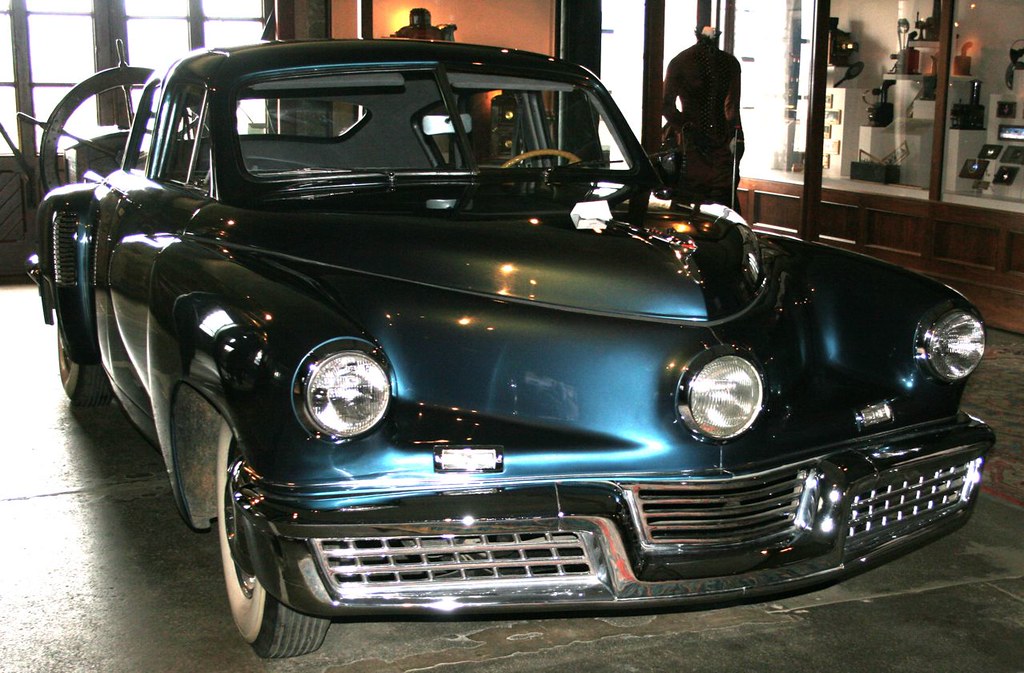
14. **Tucker**
The Tucker Corporation, founded by visionary Preston Tucker in 1944, aimed to revolutionize the automotive industry with a truly “ahead of its time” car. The singular model, the 1948 Tucker Torpedo, focused on unprecedented safety and innovation. Features like a cyclops third headlight turning with the steering wheel, a padded dashboard, and a safety cage were groundbreaking concepts decades before widespread adoption.
Despite its ingenuity and forward-thinking design, the company faced an uphill battle from inception. Established “Big Three” automakers were wary of Tucker’s disruptive potential, and the company struggled to secure crucial materials and components in the post-war economy. These external pressures were compounded by severe internal financial troubles, as the enormous capital required for mass production proved difficult to sustain.
Perhaps the most devastating blow came from a highly publicized U.S. Securities and Exchange Commission (SEC) investigation. Although Preston Tucker was acquitted of stock fraud, the protracted legal battle and negative publicity irrevocably damaged the company’s reputation and ability to attract further investment. This scrutiny, justified or not, made it virtually impossible for the small startup to compete against Detroit’s entrenched giants.
With only 51 cars ever produced, the Tucker Corporation closed its doors in 1949, just years after its ambitious launch. The Tucker ’48 saga has since become a legendary symbol of American entrepreneurial spirit, innovation, and the immense challenges faced by disruptors entering a heavily capitalized and protective industry. Its cars are now highly sought-after classics, enduring testaments to a vision arguably too bold for its time.
Read more about: The Enduring Power of Solo Adventures: Great Games That Prove Single-Player Isn’t Dead
The stories of these 14 brands, from industry giants like Pontiac and Oldsmobile to ambitious startups like Fisker and Tucker, offer a profound look into the relentless dynamics of the automotive market. Each demise, while unique in its specifics, echoes common themes: the imperative for clear brand identity, the critical need for innovation, the ever-present threat of financial instability, and the unforgiving nature of evolving consumer demands and economic shifts. They serve as compelling reminders that in the fast-paced world of automobiles, only the most adaptable, well-managed, and strategically sound ventures can truly stand the test of time. Their failures are not merely tales of corporate collapse, but invaluable lessons etched into the very fabric of industrial history.

